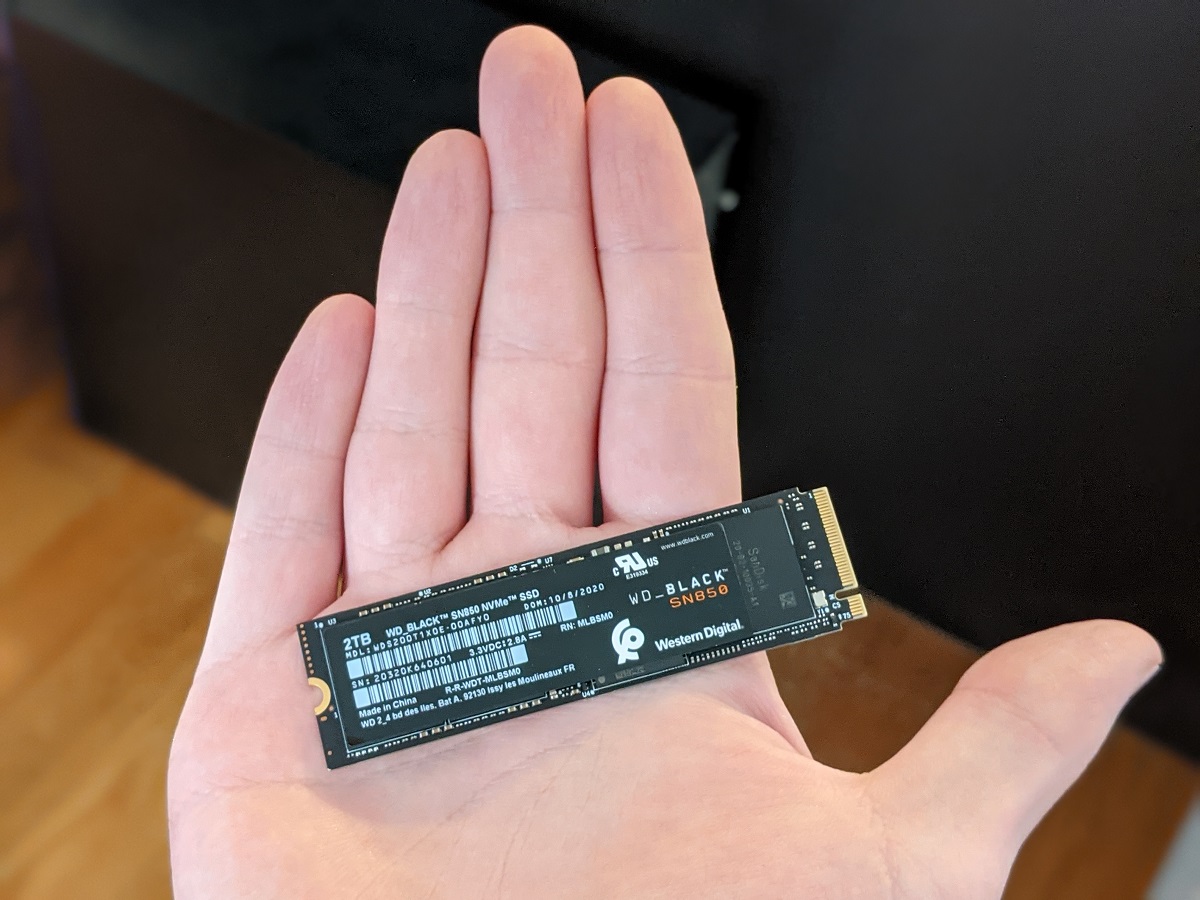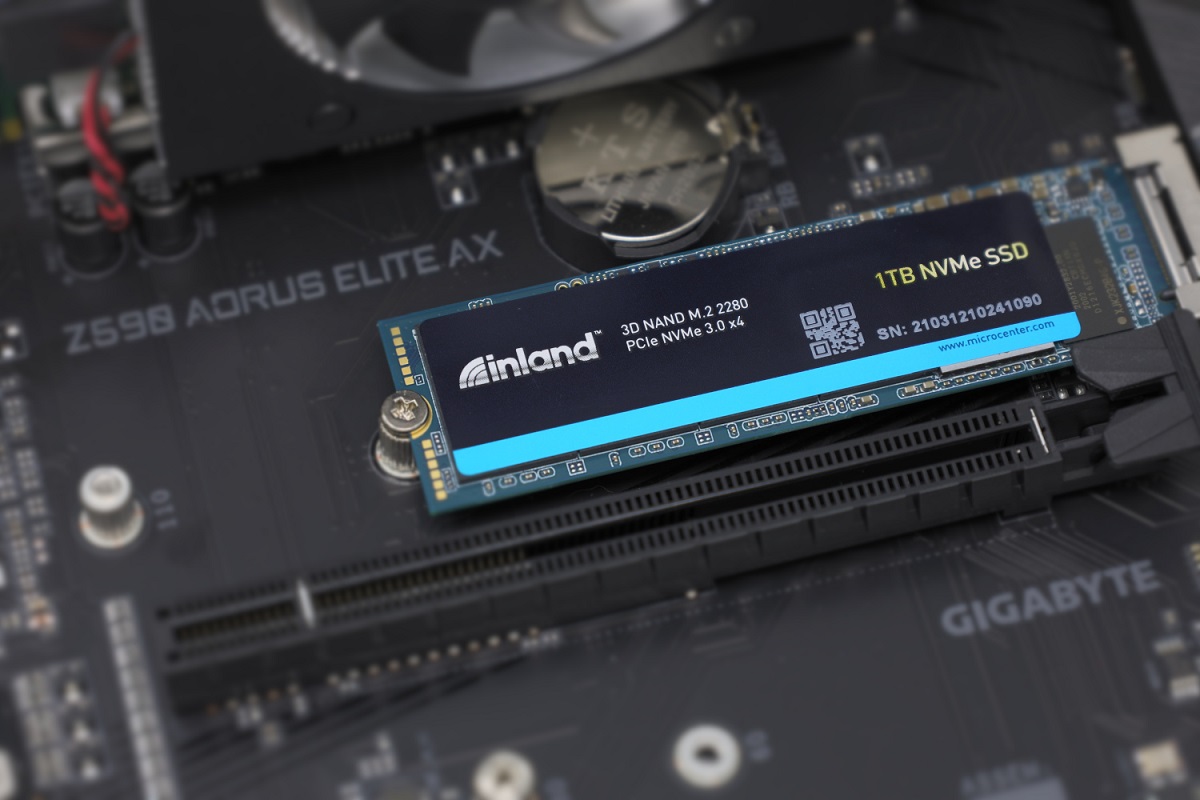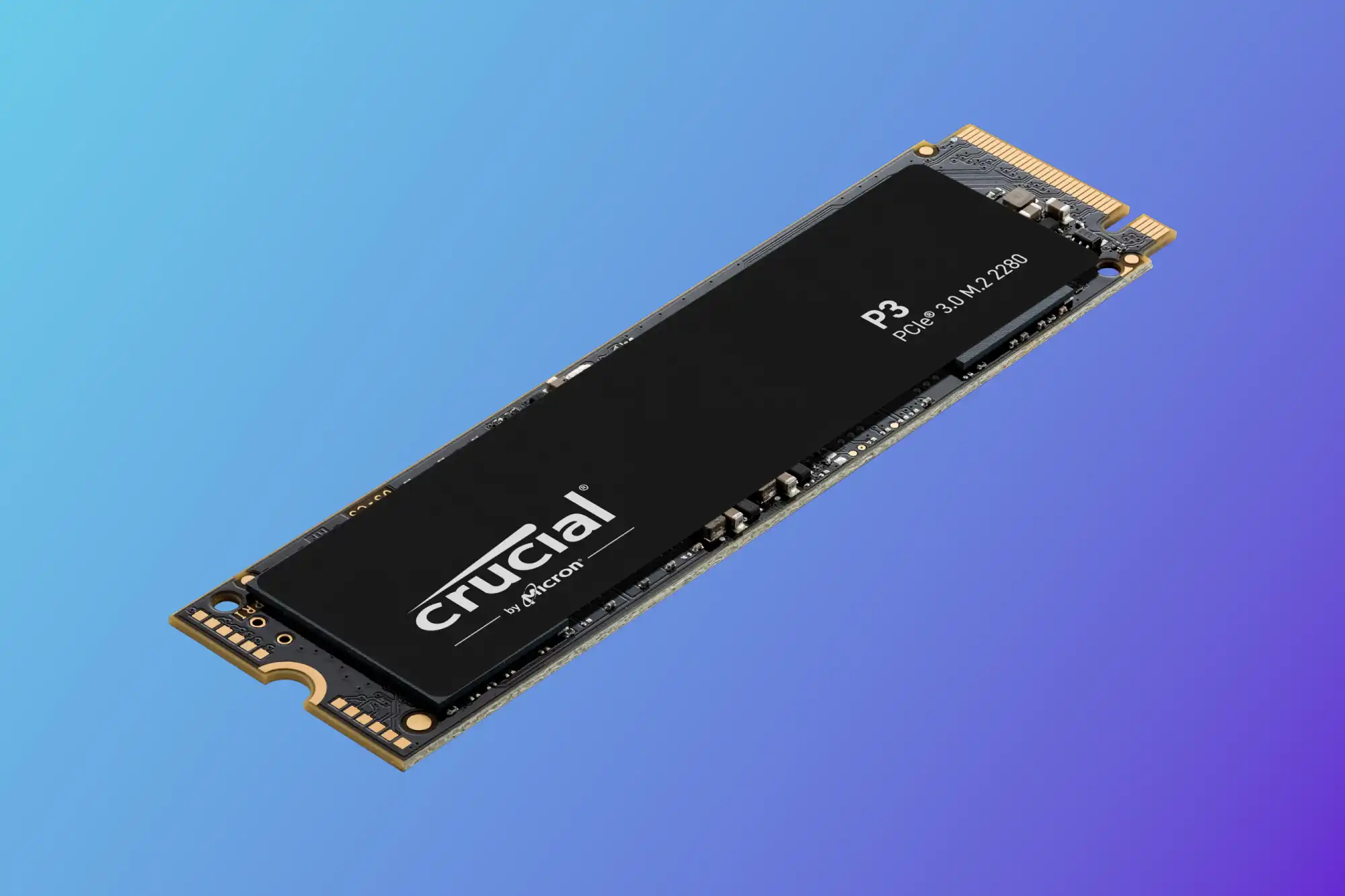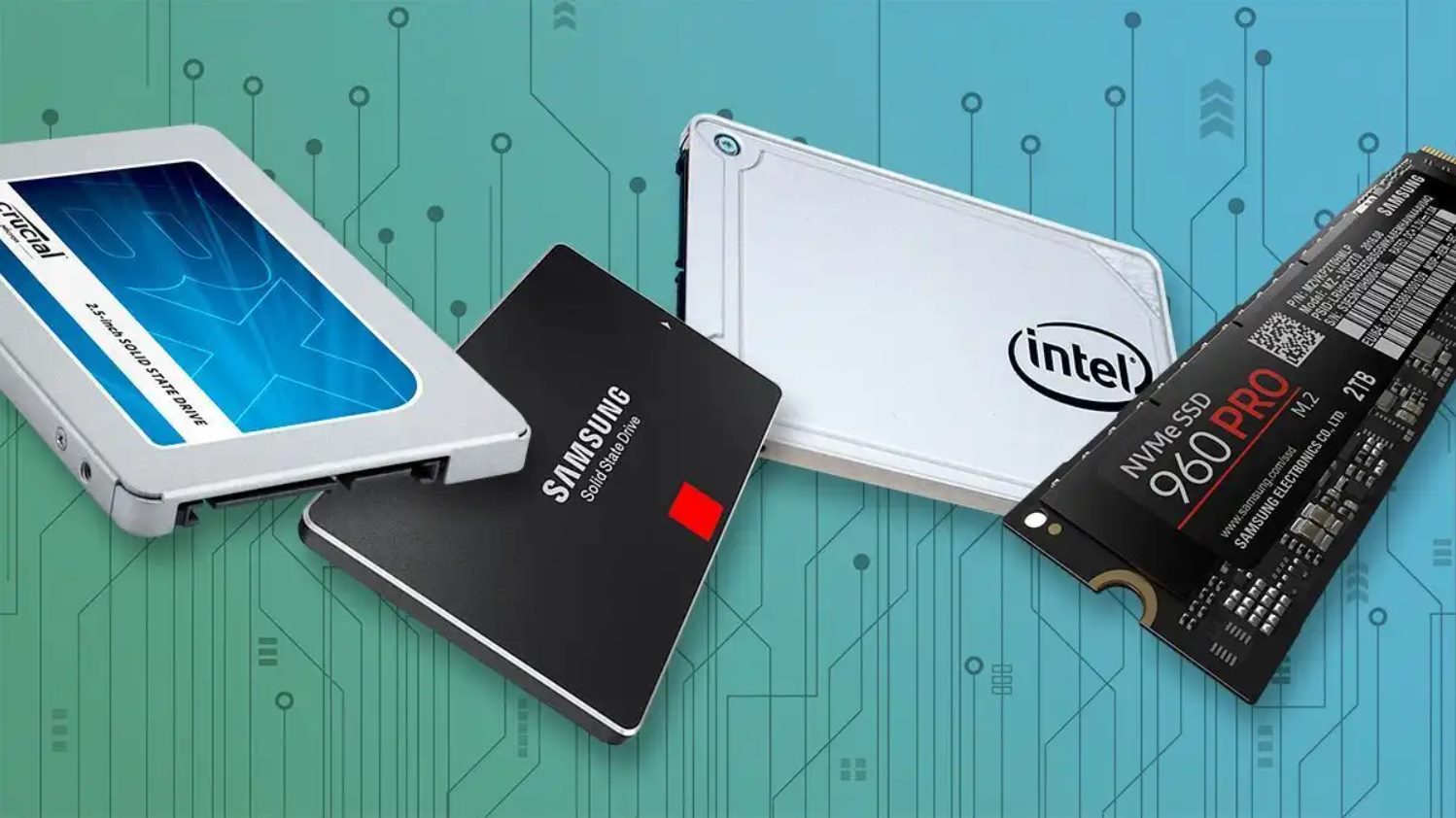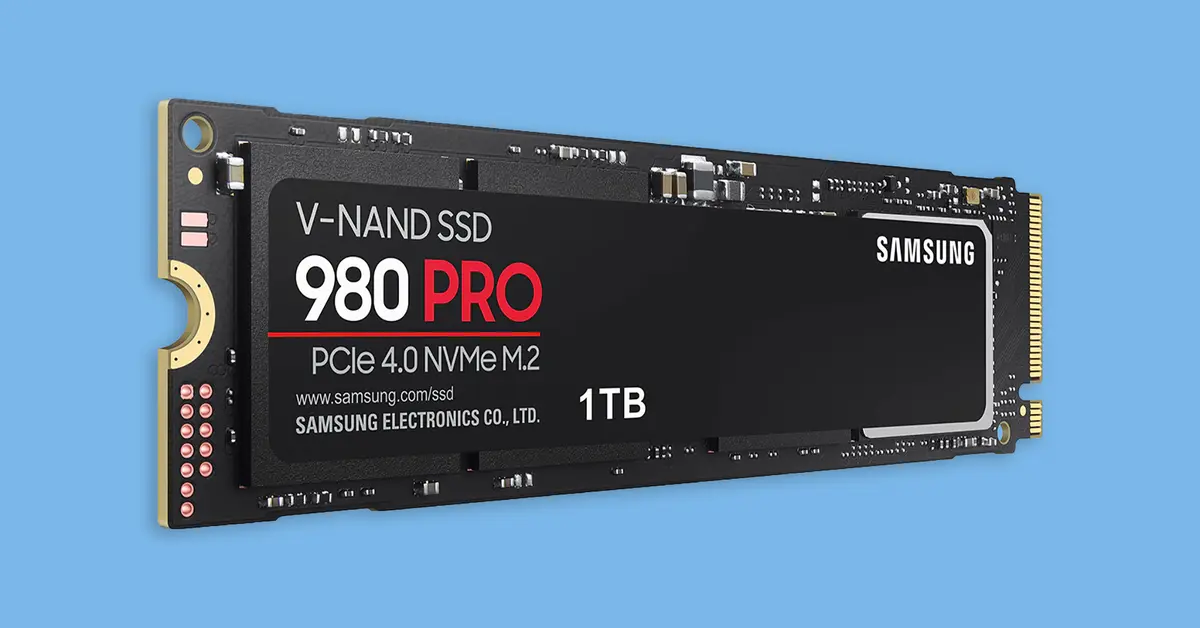Introduction
An M.2 SSD is a type of solid-state drive that provides fast and efficient storage for your computer. It uses the M.2 form factor, which is a small, rectangular-shaped module that connects directly to the motherboard. M.2 SSDs have gained popularity in recent years due to their compact size, high performance, and wide compatibility with various devices.
As with any electronic device, the lifespan of an M.2 SSD is an important consideration when choosing your storage solution. Understanding the factors that affect the lifespan of an M.2 SSD can help you make informed decisions and ensure the longevity of your investment.
In this article, we will explore the various factors that contribute to the lifespan of M.2 SSDs and provide tips on how to extend their longevity. Whether you are a gaming enthusiast, a professional content creator, or a regular computer user, understanding the lifespan of an M.2 SSD can help you optimize its usage and make the most out of its performance.
Let’s dive into the details of what factors can influence the lifespan of an M.2 SSD and how you can make the most of your storage solution.
What is an M.2 SSD?
An M.2 SSD, also known as Next Generation Form Factor (NGFF), is a solid-state drive that is designed to fit into the M.2 slot on your motherboard. It is a compact storage solution that offers high performance and reliability.
The M.2 form factor was introduced to replace the earlier mSATA and mini-PCIe form factors. M.2 SSDs come in different lengths and widths but share the same keying notches, allowing them to fit into the corresponding M.2 slot on the motherboard.
M.2 SSDs utilize NAND flash memory chips to store data. These memory chips are similar to the ones used in USB flash drives and memory cards but are much faster and more reliable. The presence of NAND flash memory allows M.2 SSDs to deliver faster boot times, quicker file transfers, and improved overall system responsiveness.
There are different types of M.2 SSDs based on the underlying technology used, such as SATA and PCIe. SATA-based M.2 SSDs provide similar performance to traditional 2.5-inch SATA SSDs but in a smaller form factor. PCIe-based M.2 SSDs, on the other hand, take advantage of the high-bandwidth PCIe interface to deliver even faster speeds. These PCIe SSDs are commonly used in high-performance gaming PCs and workstations.
M.2 SSDs have become increasingly popular due to their small size and versatility. They can be used in various devices such as desktop computers, laptops, and even ultrabooks. Additionally, many modern motherboards come equipped with multiple M.2 slots, allowing users to expand their storage capacity without the need for additional cables or power connectors.
In summary, an M.2 SSD is a compact and high-performance storage solution that utilizes NAND flash memory. It fits into the M.2 slot on the motherboard and offers faster boot times, quicker file transfers, and improved system responsiveness. With different types and capacities available, M.2 SSDs are suitable for a wide range of applications and devices.
Lifespan of M.2 SSDs
The lifespan of an M.2 SSD refers to the amount of time it can reliably function before experiencing failure or a significant decrease in performance. While M.2 SSDs are known for their durability and reliability, their lifespan can vary depending on several factors.
On average, M.2 SSDs can last for several years or even more with normal use. However, it is important to note that the specific lifespan of an M.2 SSD can be influenced by various factors, including the type of NAND flash memory used, the endurance rating, usage patterns, and environmental conditions.
The type of NAND flash memory used in an M.2 SSD plays a crucial role in determining its lifespan. There are different types of NAND flash memory, including Single-Level Cell (SLC), Multi-Level Cell (MLC), and Triple-Level Cell (TLC). SLC NAND is known for its high endurance and longevity, while TLC NAND has a higher storage capacity but lower endurance. Therefore, M.2 SSDs with SLC NAND are generally expected to have a longer lifespan compared to those with TLC NAND.
Another important factor that affects the lifespan of an M.2 SSD is its endurance rating. The endurance rating measures how many program/erase cycles an SSD can withstand before it starts to degrade. Higher endurance ratings indicate better durability and longevity. When choosing an M.2 SSD, it is recommended to consider models with higher endurance ratings if you anticipate heavy usage or constant writing of large files.
Usage patterns and workload also play a significant role in determining the lifespan of an M.2 SSD. Continuous, intensive usage, such as heavy gaming or frequent large file transfers, can put a strain on the SSD and potentially shorten its lifespan. On the other hand, light and moderate usage will have a minimal impact on the lifespan of the SSD.
Environmental conditions, including temperature and humidity, can also impact the lifespan of an M.2 SSD. Excessive heat can degrade the performance and longevity of the SSD, so it is important to ensure proper ventilation and cooling in your system. Additionally, extreme temperature fluctuations or high levels of humidity can also have a negative effect on the SSD’s lifespan.
To ensure the longevity of your M.2 SSD, it is recommended to follow these tips:
- Avoid constant overwriting of large files
- Monitor the temperature of your SSD and maintain proper cooling
- Do not expose the SSD to extreme temperatures or high levels of humidity
- Use a reliable power supply to prevent issues caused by power fluctuations or failures
- Regularly update the firmware of your SSD to benefit from performance enhancements and bug fixes
By considering these factors and adopting good practices, you can enhance the lifespan of your M.2 SSD and enjoy reliable performance for an extended period of time.
Factors that affect the lifespan of M.2 SSDs
The lifespan of an M.2 SSD can be influenced by several factors that impact its durability and performance over time. Understanding these factors can help you make informed decisions when choosing and using an M.2 SSD, ensuring its optimal lifespan.
1. NAND Flash Memory Type: The type of NAND flash memory used in an M.2 SSD is a critical factor in determining its lifespan. Different types, such as SLC, MLC, and TLC, have varying levels of endurance. SLC NAND typically offers the highest endurance and longevity, while TLC NAND provides higher storage capacity with lower endurance. Choosing an M.2 SSD with higher-quality NAND flash memory can help extend its lifespan.
2. Endurance Rating: The endurance rating measures the total amount of data that can be written to an M.2 SSD before its performance begins to degrade. A higher endurance rating indicates better durability. When selecting an M.2 SSD, consider your usage patterns and select a drive with a suitable endurance rating to ensure longevity.
3. Usage and Workload: The workload and usage patterns have a significant impact on the lifespan of an M.2 SSD. Intensive usage, such as heavy gaming or continuous writing of large files, can accelerate wear on the NAND flash memory cells and reduce the lifespan. Conversely, light to moderate usage will put less strain on the SSD and contribute to a longer lifespan.
4. Over-Provisioning: Over-provisioning is a technique where a portion of the M.2 SSD’s storage capacity is reserved for background tasks and wear-leveling algorithms. By allocating more unused space, over-provisioning can help distribute write operations more evenly across the NAND flash memory cells, thereby reducing wear and extending the lifespan of the SSD.
5. Temperature and Environmental Conditions: The temperature and environmental conditions in which the M.2 SSD operates can significantly affect its lifespan. Excessive heat can cause the SSD’s components to degrade faster, while extreme temperature fluctuations can stress the device. High humidity levels can also lead to corrosion and damage. Maintaining proper ventilation and cooling, as well as avoiding exposure to extreme temperatures and humidity, can help prolong the lifespan of your M.2 SSD.
Overall, the lifespan of an M.2 SSD is determined by a combination of factors, including the type of NAND flash memory, the endurance rating, usage patterns, and environmental conditions. By considering these factors and implementing best practices, such as selecting a drive with higher-quality NAND flash memory, managing workload, implementing over-provisioning, and maintaining proper environmental conditions, you can maximize the lifespan of your M.2 SSD and ensure reliable performance for years to come.
NAND Flash Memory Types
The NAND flash memory used in an M.2 SSD is a crucial component that directly impacts its performance and lifespan. Different types of NAND flash memory offer varying levels of endurance, speed, and storage capacity. Understanding the differences between these types can help you choose the right M.2 SSD for your needs.
1. Single-Level Cell (SLC): SLC NAND flash memory is considered the most durable and long-lasting type. It stores one bit of data per memory cell and offers the highest performance and endurance. SLC-based M.2 SSDs have faster read and write speeds, lower power consumption, and longer lifespan compared to other types. However, SLC NAND is more expensive and has lower storage capacity compared to other types, making it ideal for applications that require high reliability and speed, such as enterprise storage and industrial-grade systems.
2. Multi-Level Cell (MLC): MLC NAND flash memory can store multiple bits of data per memory cell, typically two or three bits. This results in higher storage capacity compared to SLC NAND at a more affordable price point. MLC-based M.2 SSDs offer a good balance between performance, endurance, and cost. They are suitable for a range of applications, including consumer-grade laptops, desktops, and gaming systems that require a combination of speed, capacity, and reasonable lifespan.
3. Triple-Level Cell (TLC): TLC NAND flash memory is the most common type used in consumer-grade M.2 SSDs due to its higher storage density and affordability. It can store three bits of data per memory cell, providing even higher storage capacity compared to MLC NAND. However, TLC-based M.2 SSDs typically have lower endurance and slightly slower read and write speeds compared to SLC and MLC counterparts. TLC-based SSDs are suitable for general consumer use, such as everyday computing, multimedia tasks, and light gaming.
4. Quad-Level Cell (QLC): QLC NAND flash memory is a relatively new type that stores four bits of data per memory cell, further increasing the storage capacity. QLC-based M.2 SSDs offer the highest storage capacity at a lower cost but have the lowest endurance and slower performance compared to other types. They are primarily used for cost-effective consumer applications, such as large file storage, content creation, and data archiving.
It is important to note that as the density of the NAND flash memory increases, the endurance typically decreases due to the higher number of program/erase cycles required. However, advancements in technology, such as wear-leveling algorithms and error correction codes, help mitigate these limitations and improve the overall reliability and lifespan of M.2 SSDs.
In summary, the type of NAND flash memory used in an M.2 SSD directly affects its performance, endurance, storage capacity, and cost. SLC NAND offers the highest endurance and longevity, while MLC, TLC, and QLC NAND strike a balance between performance, capacity, and affordability. By understanding these differences, you can select an M.2 SSD that best meets your requirements in terms of speed, capacity, and lifespan.
Endurance Rating
The endurance rating of an M.2 SSD is a measure of how many program/erase (P/E) cycles it can withstand before the NAND flash memory cells begin to degrade. Each P/E cycle represents a write operation, where data is written to the memory cells and erased when necessary. The higher the endurance rating, the longer the M.2 SSD is expected to last.
Endurance ratings are typically expressed as terabytes written (TBW) or drive writes per day (DWPD). TBW represents the total amount of data that can be written to the M.2 SSD before it reaches the specified endurance level, while DWPD indicates the number of times the drive’s capacity can be written to per day over the warranty period.
When choosing an M.2 SSD, it is important to consider your specific usage patterns and workload. If you anticipate heavy usage, such as constant writing of large files or running demanding applications, selecting an M.2 SSD with a higher endurance rating is recommended to ensure its longevity.
The endurance rating can vary greatly between different M.2 SSD models and brands. Entry-level consumer-grade SSDs typically have lower endurance ratings, ranging from 50 to 150 TBW. Mid-range SSDs often offer endurance ratings of 150 to 300 TBW, providing better durability for moderate usage. High-end and enterprise-grade SSDs can have endurance ratings exceeding 600 TBW, catering to intensive workloads and professional applications.
It is worth noting that the endurance rating is provided as an estimate based on standardized testing methods. Actual usage patterns, including the size and frequency of data transfers, can impact the SSD’s lifespan. However, modern SSDs employ various techniques, such as wear-leveling algorithms and improved error correction codes, to distribute write operations evenly across the NAND flash memory cells and maximize endurance.
Furthermore, it is essential to consider the warranty period provided by the manufacturer. The warranty duration often correlates with the endurance rating, as it reflects the manufacturer’s confidence in the product’s longevity. A longer warranty period can offer additional peace of mind in terms of the SSD’s reliability and lifespan.
In summary, the endurance rating of an M.2 SSD indicates its ability to withstand program/erase cycles, and it is a vital consideration when selecting a drive. Understanding your usage patterns and choosing an M.2 SSD with a higher endurance rating can ensure long-term reliability and optimal performance, especially for applications that involve heavy data writing and constant usage.
Usage and Workload
The usage patterns and workload placed on an M.2 SSD can have a significant impact on its lifespan. How you use the SSD and the amount of data you write to it on a regular basis can affect its endurance and overall longevity. Understanding the relationship between usage and workload is crucial for maximizing the lifespan of your M.2 SSD.
1. Heavy Workloads: If you engage in activities that involve constant writing of large files, such as video editing, 3D modeling, or running virtual machines, you are subjecting your M.2 SSD to a heavy workload. These intense workloads can wear out the NAND flash memory cells more quickly, potentially shortening the lifespan of the drive. In such scenarios, it is recommended to opt for an M.2 SSD with a higher endurance rating to ensure optimal performance and reliability over time.
2. Everyday Computing: For everyday computing tasks like web browsing, document editing, and media consumption, the workload placed on the M.2 SSD is generally lighter. These activities involve smaller file transfers and fewer write operations compared to more demanding workloads. As a result, the lifespan of the SSD is less likely to be significantly impacted. However, it is still essential to choose the right M.2 SSD with a suitable endurance rating to withstand occasional bursts of activity and ensure a decent lifespan.
3. Gaming: Gaming can vary in terms of its impact on an M.2 SSD’s lifespan. Casual gaming with lighter games typically has minimal impact since the data writes tend to be small and infrequent. However, if you are an avid gamer who frequently plays modern, high-end games that have large game files and frequent updates, the SSD may experience more frequent and substantial data writes. In this case, it is beneficial to consider an M.2 SSD with a higher endurance rating to counteract the heavy workload imposed by gaming.
4. Write-intensive Applications: Certain applications, such as database management or software development tools, involve frequent writing and modifying of data on the M.2 SSD. These write-intensive applications can accelerate wear on the SSD, potentially shortening its lifespan. It is advisable to choose an M.2 SSD with a higher endurance rating or consider implementing over-provisioning to distribute the workload more evenly and extend the drive’s lifespan.
In addition to workload considerations, SSDs have a finite number of write operations they can perform before reaching their endurance limits. However, modern SSDs are equipped with technologies like wear-leveling, which distribute writes across all available cells to ensure even usage and maximize endurance. This helps to mitigate the impact of heavy workloads and extend the overall lifespan of the SSD.
In summary, the workload and usage patterns placed on your M.2 SSD can influence its lifespan. Heavy workloads, such as constant writing of large files or running resource-intensive applications, can accelerate wear on the NAND flash memory cells. Understanding your usage requirements and selecting an M.2 SSD with a suitable endurance rating will help ensure optimal performance and maximize the lifespan of your SSD.
Over-Provisioning
Over-provisioning is a technique used to allocate a portion of an M.2 SSD’s storage capacity for background tasks and wear-leveling algorithms. This reserved space provides several benefits and can help improve the performance and longevity of the SSD.
When an M.2 SSD is over-provisioned, a percentage of its total capacity is set aside and not accessible to the operating system or user. This unused space serves multiple purposes:
1. Wear-Leveling: Over-provisioning helps to distribute write operations evenly across the NAND flash memory cells. By spreading out the writes, it reduces the strain on any specific area and prevents accelerated wear on individual cells. This wear-leveling technique helps to extend the lifespan of the SSD.
2. Background Tasks: Over-provisioned space allows the SSD to perform background tasks, such as garbage collection and TRIM operations. Garbage collection helps to free up space in NAND flash memory cells that are no longer in use, maintaining optimal performance. TRIM is a command that informs the SSD which data blocks are no longer needed, enabling faster write speeds by keeping the drive’s internal memory cells organized and ready for new data.
3. Improves Performance: Over-provisioning can contribute to improved performance by reducing write amplification, which occurs when data is written and subsequently rewritten to different cells due to behind-the-scenes operations like wear-leveling. By having more free space available, the SSD can perform write operations more efficiently and maintain consistent performance.
The amount of over-provisioning recommended for an M.2 SSD depends on various factors, including the drive’s overall capacity and usage scenario. Typically, a range of 7% to 20% over-provisioning is advised. For example, if you have a 512GB SSD, over-provisioning around 10% would allocate approximately 51GB of unallocated space.
It is important to note that over-provisioning reduces the usable storage capacity of the SSD. However, the benefits it provides in terms of improved performance and increased longevity outweigh the loss of usable space for most users.
Some newer M.2 SSDs come with pre-configured over-provisioning, while others may require manual configuration using manufacturer-provided software or through the System BIOS/UEFI settings. Always consult the manufacturer’s documentation or support resources to ensure proper implementation of over-provisioning.
In summary, over-provisioning is a technique that allocates a portion of an M.2 SSD’s storage capacity for wear-leveling and background tasks. It enhances the SSD’s performance, improves longevity, and contributes to consistent and reliable operation. While it reduces the usable storage space, the benefits of over-provisioning make it a worthwhile consideration when selecting and configuring an M.2 SSD.
Temperature and Environmental Conditions
The temperature and environmental conditions in which an M.2 SSD operates can significantly impact its performance, reliability, and overall lifespan. Excessive heat, temperature fluctuations, and high levels of humidity can all have detrimental effects on the SSD’s components.
1. Heat: Heat is one of the primary factors that can affect the lifespan of an M.2 SSD. When exposed to high temperatures, the components of the SSD, especially the NAND flash memory cells, can degrade more rapidly. Excessive heat can lead to increased wear and tear on the drive, reduced performance, and even premature failure. It is crucial to ensure proper cooling and ventilation in your system to maintain optimal operating temperatures for the M.2 SSD. This can be achieved by using adequate case fans, ensuring proper airflow, and avoiding excessive dust accumulation that can hinder heat dissipation.
2. Temperature Fluctuations: Extreme temperature fluctuations can stress the components of an M.2 SSD, potentially shortening its lifespan. Rapid changes from high to low temperatures or vice versa can lead to expansion and contraction of the SSD’s internal components, possibly causing damage over time. It is advisable to keep the system in an environment with stable temperatures to minimize the impact of temperature fluctuations on the SSD.
3. Humidity: High levels of humidity can be problematic for M.2 SSDs, as moisture can corrode the components and lead to electrical shorts or other forms of damage. It is important to avoid exposing the SSD to excessively humid conditions. If you live in an area with high humidity, consider using a dehumidifier in the room or implementing proper moisture control measures to protect your SSD from potential harm.
4. Environmental Factors: Environmental factors such as dust, smoke, and electromagnetic interference can also impact the lifespan of an M.2 SSD. Dust and smoke particles can accumulate on the SSD’s components, hindering proper heat dissipation and potentially causing overheating. Dust can also contain conductive particles that may result in electrical shorts. Electromagnetic interference from nearby sources can disrupt the SSD’s operation and lead to data corruption or drive failure. It is important to keep the SSD in a clean, dust-free environment and take precautions to minimize exposure to electromagnetic interference.
By ensuring proper ventilation, controlling temperature and humidity levels, and protecting the M.2 SSD from environmental factors, you can significantly extend its lifespan and maintain its optimal performance. Regularly cleaning the system’s internals, utilizing dust filters, and storing the SSD in a controlled environment are recommended practices to minimize the impact of temperature and environmental conditions.
It is worth noting that SSDs typically have a wider operating temperature range compared to traditional hard drives. However, operating the SSD within the manufacturer’s recommended temperature range will help ensure the best performance and longevity.
In summary, the temperature and environmental conditions in which an M.2 SSD operates can have a substantial impact on its lifespan. Excessive heat, temperature fluctuations, high humidity levels, dust, and electromagnetic interference can all contribute to reduced performance and premature failure. Taking steps to maintain optimal operating temperatures, controlling humidity levels, and protecting the SSD from environmental factors will help maximize its lifespan and reliability.
Tips to Extend the Lifespan of M.2 SSDs
Maximizing the lifespan of your M.2 SSD is crucial to ensure long-term performance and reliability. By following these tips, you can extend the lifespan of your M.2 SSD and optimize its overall usage:
1. Avoid Constant Overwriting: Limit unnecessary write operations by avoiding constant overwriting of large files. Frequent and constant writes can wear down the NAND flash memory cells more quickly, shortening the lifespan of the SSD. Consider storing frequently accessed files or programs on a separate drive or utilizing cloud storage to minimize write operations on the M.2 SSD.
2. Monitor SSD Temperature: Excessive heat can degrade an M.2 SSD’s performance and longevity. Make sure to monitor the temperature of your SSD using monitoring software or the manufacturer’s provided tools. If you notice temperatures consistently exceeding the recommended operating range, improve system ventilation and cooling by using additional case fans, optimizing airflow, or considering liquid cooling solutions if necessary.
3. Avoid Extreme Temperature and Humidity: M.2 SSDs are sensitive to extreme temperatures and high humidity levels. Avoid exposing your M.2 SSD to excessive heat or extreme temperature fluctuations. Keep it in a controlled environment with stable temperatures and humidity levels to minimize potential damage or accelerated wear on the components.
4. Use a Reliable Power Supply: Unstable power supply, voltage fluctuations, or power surges can damage an M.2 SSD. Invest in a high-quality power supply unit (PSU) with stable power delivery to minimize the risk of SSD failure due to power-related issues. Use surge protectors or uninterruptible power supply (UPS) systems to protect your SSD from sudden power failures or electrical surges.
5. Keep Firmware Updated: Regularly update your M.2 SSD’s firmware to benefit from performance enhancements, bug fixes, and improved compatibility. Manufacturers often release firmware updates to optimize the SSD’s performance and address any known issues. Check the manufacturer’s website or use their provided software to ensure you have the latest firmware installed.
6. Implement Over-Provisioning: Over-provisioning, as mentioned earlier, can help extend the lifespan of an M.2 SSD. Allocate a portion of the drive’s capacity for over-provisioning to improve wear-leveling and optimize performance. Consult the manufacturer’s instructions or software to properly configure over-provisioning on your specific M.2 SSD.
7. Regularly Backup Data: Although SSDs are generally reliable, unexpected failures can occur. To safeguard your data, regularly backup important files and documents to an external storage solution or cloud-based backup service. This ensures that even if the SSD fails, you will still have a copy of your valuable data.
By following these tips, you can prolong the lifespan of your M.2 SSD and ensure optimal performance and reliability over time. It is important to note that while SSDs have a finite lifespan, adopting these best practices will help you get the most out of your investment and minimize the chances of premature failure.
Conclusion
Understanding the lifespan of an M.2 SSD is essential for selecting the right storage solution and maximizing its longevity. Factors such as the type of NAND flash memory, endurance rating, usage patterns, and environmental conditions all play a role in determining the lifespan of an M.2 SSD.
An M.2 SSD, with its compact form factor and high performance, has become a popular choice for storage in various devices. By selecting an M.2 SSD with higher-quality NAND flash memory and a suitable endurance rating, you can ensure its optimal performance and longevity. Consider your specific usage patterns and workload to determine the appropriate endurance rating for your needs.
Additionally, implementing over-provisioning, monitoring the SSD’s temperature, avoiding extreme temperature and humidity conditions, using a reliable power supply, and keeping the firmware updated are all important steps to maximize the lifespan of an M.2 SSD. By following these tips, you can enhance the performance, reliability, and overall lifespan of your M.2 SSD.
It is worth noting that while M.2 SSDs are generally durable and long-lasting, they have a finite lifespan. As technology advances and new developments in NAND flash memory continue, the lifespan of M.2 SSDs can be expected to improve even further. Nevertheless, regular data backups and keeping an eye on the health of your SSD are crucial to protecting your valuable data and ensuring a smooth computing experience.
By understanding the various factors that affect the lifespan of an M.2 SSD and implementing the recommended tips, you can make informed decisions when choosing and using your storage solution. Remember that proper care, maintenance, and adherence to best practices will help you get the most out of your M.2 SSD and enjoy reliable performance for years to come.







